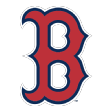Some teams are simply counting down the days until baseball's postseason begins. Some are still scrambling for a playoff spot or a division title. But every team has some concern about its pitching staff. It's September, which means staffs are bruised and tired and fighting off injuries. Here is a key pitching question for each team to resolve or address as we head down the final stretch of the season and head into October.
American League contenders
 Boston Red Sox: What's up with Chris Sale's health?
Boston Red Sox: What's up with Chris Sale's health?
Sale has pitched just five innings since July 27, all of them coming when he threw 68 pitches and fanned 12 against the Orioles on Aug. 12. Since then, he's been out with mild inflammation in his shoulder. Insiders are a little dubious that the injury is really anything other than an excuse to give Sale some extra rest with the Red Sox comfortably in first place -- especially since he hit 100 mph in that start against Baltimore and then landed on the disabled list.
Red Sox manager Alex Cora said Sunday that Sale could return as soon as this weekend, maybe pitching a few innings as he builds his workload back up. The Sox are trying to avoid what happened last year when Sale tired down the stretch, giving up nine home runs with a .875 OPS allowed in September and then nine runs in 9.2 innings in two postseason appearances against the Astros. Boston hosts Houston this weekend, so if Cora doesn't want to give the Astros a look at Sale, maybe he pitches against the Blue Jays early next week.
 New York Yankees: How severe is Aroldis Chapman's knee injury?
New York Yankees: How severe is Aroldis Chapman's knee injury?
Chapman landed on the DL on Aug. 22 with left knee tendinitis and has received two platelet-rich plasma injections to help with the healing. General manager Brian Cashman said over the weekend that there's no guarantee Chapman will return this season, although he was admittedly being cautious on committing to a timetable.
After seeing a decline in his performance in 2017, Chapman was back to dominating again in 2018, even with the troublesome knee. His strikeout rate had climbed from 32.9 percent in 2017 to 43.3 percent (higher than his career rate) and his batting average allowed had dropped from .200 to .136.
There is still a championship-level bullpen here, even with Chapman out. Dellin Betances and David Robertson have shared closer duties, and Chad Green and Jonathan Holder hold down the middle innings. Zach Britton remains a wild card, with control issues that make him a shaky option. Still, the Yankees' pitching staff is built from the back to the front, and with Luis Severino struggling in the second half -- you can argue getting him straightened out is more important than Chapman's return -- the Yankees will need a full slate of healthy pitchers coming out of the pen.
 Cleveland Indians: Who is the closer?
Cleveland Indians: Who is the closer?
The Cleveland bullpen is kind of a mess right now:
• Closer Cody Allen has not had a strong season, posting a 4.45 ERA with 11 home runs (and 27 walks) in 57.2 innings. He had three blown saves in August and gave up runs in five of 13 appearances. He's as about as trustworthy right now as your 16-year-old son with your '68 Mustang.
• Andrew Miller is on the DL with a left shoulder impingement, his third DL stint of the season. There's no timetable for his return, but the Indians hope he'll be back for the postseason. Still, given the shoulder issue, it seems unlikely he'll be a multi-inning weapon like he was back in 2016.
• Adam Cimber, who came over in the Brad Hand trade, hasn't been the same pitcher he was with the Padres, allowing 16 hits in 11.2 innings with just two strikeouts (after fanning 51 in 48.1 innings with San Diego).
Cleveland's most reliable reliever of late has actually been veteran Oliver Perez, who has been crazy good as a LOOGY, with 30 strikeouts and just four walks in 25 innings. Still, Perez is best used in a limited role, and if the Indians face the Astros and their righty-heavy lineup, he'll play a minimal role. Terry Francona will be willing to go deeper with his starters than other postseason managers -- particularly if Trevor Bauer returns from the stress fracture in his right leg -- but he has the final few weeks to determine whether Allen is going to be the ninth-inning guy or if Hand takes over that role.
 Houston Astros: Will Justin Verlander stop giving up home runs?
Houston Astros: Will Justin Verlander stop giving up home runs?
Look, the closer situation might still pop up, but for now the job belongs to Roberto Osuna, and the bullpen issues revolve more around how A.J. Hinch lines up the work in front of Osuna. I know the Astros' bullpen hasn't been clutch, but it does lead the majors in ERA, so it's not like Hinch doesn't have some talent down there. Collin McHugh has actually been terrific all season and Hinch has used the former starter in multiple-inning stints when needed, so look for that to continue down the stretch and into October.
Anyway, the biggest concern might actually be Verlander, the likely No. 1 starter heading into the postseason. He has a 4.31 ERA over his past 10 starts and has allowed 15 home runs in 56.1 innings. The other numbers are fine -- in fact, he has 88 strikeouts in that span -- but the home runs are scary. A quick examination of those 15 home runs:
• Five came on the first pitch (four of those off fastballs).
• Six came with two strikes.
• Only one came on a hitter's count (a 3-1 fastball that Rougned Odor hit out).
That's the weird thing: The home runs aren't a result of Verlander falling behind hitters and them sitting on fastballs. Ten of the 15 home runs have come off fastballs, however, and eight of those came on pitches in the upper half of the strike zone. Nolan Arenado did take a 97 mph fastball that was up and away out to right field, but the other seven were middle of the zone, so it's been an issue of location and batters not missing. As the strikeout-walk ratio suggests, it's not a matter of stuff.
 Oakland A's: Who starts the wild-card game?
Oakland A's: Who starts the wild-card game?
No, I'm not conceding the AL West to the Astros. Anything can happen. But with Sean Manaea out with rotator cuff tendinitis and shut down indefinitely, the A's might have to go to a Plan B if they end up in the wild-card game against the Yankees. Mike Fiers has a 2.93 ERA in five starts with the A's and throws strikes, but he's also prone to the long ball, not something you want if that game is played at Yankee Stadium (although the A's are only 4½ games behind the Yankees). Edwin Jackson is ... well, Edwin Jackson. You're not going to trust him in a do-or-die game. Brett Anderson? He's on the DL right now as well.
Assuming the A's actually end up with the ability to line up the guy they want, Trevor Cahill seems like the best bet. He has allowed just six home runs in 95 innings, generates enough strikeouts and does have a little postseason experience with the Cubs in 2015. There's one hitch to consider, however: Cahill has a 1.09 ERA at home and a 7.02 on the road. He has allowed a .164 average in Oakland and .301 away from Oakland. He's Bob Gibson circa 1968 at home and Bob Gibson -- the guy who pitched for the Brewers in the '80s -- on the road. If there's ever a team to use a bullpen game in the wild-card game, it's the A's.
Maybe Bob Melvin takes the playbook from Kevin Cash and starts a reliever and then goes to a starter for two or three innings and then back to the bullpen.
National League contenders
 Atlanta Braves: How does the rotation line up?
Atlanta Braves: How does the rotation line up?
The bullpen has had a few hiccups and there isn't necessarily a set closer (three different relievers have picked up the team's past three saves), so manager Brian Snitker will likely continue to mix and match, with A.J. Minter, Brad Brach, Jonny Venters, Dan Winkler and Jesse Biddle getting the important innings.
But while reliever choices will come based on in-game matchups, the rotation is where Snitker has some bigger decisions to make. He has five options -- actually, the Braves used six starters this past time through the rotation, with Touki Toussaint getting a start (he could actually become a bullpen weapon in October). Mike Foltynewicz has been the consistent starter all season, but Anibal Sanchez is right there -- both have a sub-3.00 ERA. Kevin Gausman has a 1.66 ERA in six starts with the Braves, although five of those starts have come against the Marlins, Pirates and Mets. Sean Newcomb might have hit a wall, as he's allowed 21 runs in 21.2 innings over his past five outings (with 35 hits allowed). Julio Teheran has been a little wild and homer-prone (especially in the first half), but has been tough to hit all season, with a .201 average allowed.
This is mostly a good dilemma for Snitker. Of course, the Braves have to hold off the Phillies and it could be a mad scramble the final weekend for the division title, which might affect who pitches when. They say October is about power pitching, so that favors Foltynewicz and Gausman over Sanchez, and that's how I'd set it up, with Folty getting the potential two starts in the division series.
 Philadelphia Phillies: Who is the closer?
Philadelphia Phillies: Who is the closer?
I can't remember a season when so many potential playoff teams remain relatively unsettled in the closer role in September. Maybe we're learning that it doesn't really matter all that much -- although in the Phillies' case, they've lost nine games they were leading after seven innings (compared to the MLB average of 5.3).
One thing is clear: There doesn't seem to be any discernable pattern to whom Gabe Kapler is using in his bullpen, although Pat Neshek might end up getting most of the ninth-inning opportunities down the stretch. Since the beginning of August, however, Neshek, Seranthony Dominguez and Tommy Hunter have each entered games in the seventh through the ninth innings. Really, it's not so much a matter of who pitches when but who pitches well. The Phillies trail the Braves by four games, so they can't afford to blow any more late-inning leads.
 Chicago Cubs: Who is the No. 1 starter?
Chicago Cubs: Who is the No. 1 starter?
Here's another team with an unsettled closer situation. Brandon Morrow probably resumes the role when he returns in mid-September from biceps inflammation, but he'll have to prove he's healthy. The biggest question facing Joe Maddon: Who gets the ball in Game 1 of the division series? (Again, assuming the Cubs win the division.)
Jon Lester is 15-5 with a 3.53 ERA and, of course, has been one of the best postseason pitchers in the expanded playoffs era, with a 2.55 ERA over 148 innings -- including a 2.53 mark with the Cubs. It would make sense why Maddon would trust that history and lean on Lester. On the other hand, Lester's past two months haven't been as good as his first three: He has a 5.57 ERA since July 1, with 13 home runs in 63 innings.
Cole Hamels, meanwhile, has been brilliant since coming over from the Rangers, with a 1.00 ERA in seven starts -- and no home runs in 45 innings. If Hamels keeps pitching like this, he might have to get the ball for the playoff opener.
 Milwaukee Brewers: Who is the No. 1 starter?
Milwaukee Brewers: Who is the No. 1 starter?
Frankly, if the Brewers land in the NL wild-card game, I'd just start Josh Hader and ride him as long as I could. Craig Counsell might not agree with that plan and go with ... umm ... Wade Miley? Hey, the lefty has a 2.12 ERA in 12 starts with the Brewers, although that number has been built on hit suppression more than strikeouts and a low walk total. In other words, that dam might burst at any time.
Jhoulys Chacin has been the team's most consistent starter and has actually been better in the second half:
First half: 3.68 ERA, .672 OPS, 1.87 SO-BB ratio
Second half: 3.17 ERA, .651 OPS, 3.36 SO-BB ratio
If the Brewers play a team that platoons a lot or changes its lineup -- like the Cubs or Dodgers -- Counsell could use the old table-game strategy of starting Miley or Chacin and then quickly going to the other guy ... and then, of course, going to the bullpen as needed.
 St. Louis Cardinals: How best to use Carlos Martinez?
St. Louis Cardinals: How best to use Carlos Martinez?
The Cardinals already announced Martinez will remain in the bullpen rather than stretch him back out as a starter after a DL stint for an oblique strain. It was a bit of a curious decision given that Martinez had missed just three weeks. With some of the young starters already approaching or exceeding their career highs in innings, Martinez might have had more value in the rotation.
Anyway, the question now that Bud Norris has blown a couple games is whether Martinez becomes the closer. Manager Mike Shildt could also expand his role to somebody who will go two or even three innings out of the pen. In his six relief appearances, Martinez hasn't thrown more than 21 pitches. Given Martinez's history as a starter and ability to hold his stuff, expanding his role -- and having to rely less on Norris -- is a potential strategy.
 Los Angeles Dodgers: Will the bullpen keep losing games?
Los Angeles Dodgers: Will the bullpen keep losing games?
The Dodgers are 17-14 since the beginning of August; an incredible seven of those losses came when the opponent scored the winning run in the ninth inning. Another came in the 10th. Another came in the bottom of the eighth, so that's nine of 14 losses coming in the opponent's final at-bat. Yeah, the bullpen hasn't exactly been clutch. Of course, it would help if the Dodgers scored runs more consistently -- they scored two or fewer runs in 10 of those 30 games and three runs in another seven games.
Dave Roberts will undoubtedly live with Kenley Jansen as the closer, even though he clearly hasn't been right since returning from his irregular heartbeat -- although Jansen might be forced to skip this weekend's series in Colorado, where he has previously had issues in 2012 and earlier this season. Aside from that, Jansen will almost certainly be limited to one-inning outings, even with the Dodgers fighting for their playoff lives. Given better health, Roberts would have almost certainly expanded Jansen's role like he's done in the postseason.
If there's a key guy aside from Jansen, it's Kenta Maeda, who served up a three-run home run in the ninth in Monday's loss to the Mets. Maeda was big out of the pen last October, and his stuff plays up in shorter stints. He's also been hit hard of late, with a 6.37 ERA since mid-July (some of that in a starting role).
 Colorado Rockies: Is three-fifths of a rotation enough?
Colorado Rockies: Is three-fifths of a rotation enough?
Kyle Freeland, Jon Gray and German Marquez have each been excellent in the second half, but Tyler Anderson is 0-4 with a 7.88 ERA in eight starts, which puts pressure on Antonio Senzatela and/or Chad Bettis to step up if Anderson gets booted from the rotation down the stretch.
The Rockies have a tough schedule the rest of the way, as they're done with the Padres and their two out-of-division opponents are season-ending series at home against the Phillies and Nationals (although the Nationals might be thinking more about their first offseason golf outings by then). Fifteen of the team's final 24 games are at home, which also means Bud Black will be getting shorter outings from his starters and will have to rely more on what has been a shaky bullpen. Closer Wade Davis has a 6.62 ERA in the second half with four losses. The peripheral numbers aren't as bad as the ERA, but he has obviously come up short too often in close games. So maybe he's the key question.
 Arizona Diamondbacks: Will Clay Buchholz keep it going?
Arizona Diamondbacks: Will Clay Buchholz keep it going?
I've mentioned Brad Boxberger a couple of times recently in my nightly roundups, and as Matt Kemp showed over the weekend, Boxberger is an extremely shaky closer option. (Yes, another team suddenly with a gut-clenching closer situation.)
One of the biggest surprises of 2018 has been the re-emergence of Buchholz. He's 7-2 with a 2.05 ERA. There's some smoke and mirrors in those numbers, however: He has a 3.54 FIP and 4.03 xFIP. He has allowed a .359 slugging percentage versus an expected slugging percentage of .432 based on Statcast data. He has also faced an easy slate of opponents. Baseball Prospectus tracks the quality of pitchers' opponents, and among pitchers with at least 75 innings, Buchholz ranks 153rd out of 153. Using the BP metric total average (scaled to batting average), Buchholz's average batter has a .253 TA (David Hess of the Orioles has faced a .270 average).
Buchholz is also on a roll over his past four starts: a complete game, no runs, no runs and one run in five innings against the Dodgers. Maybe he has been a little lucky. The Diamondbacks just need that luck to run a few more weeks.
